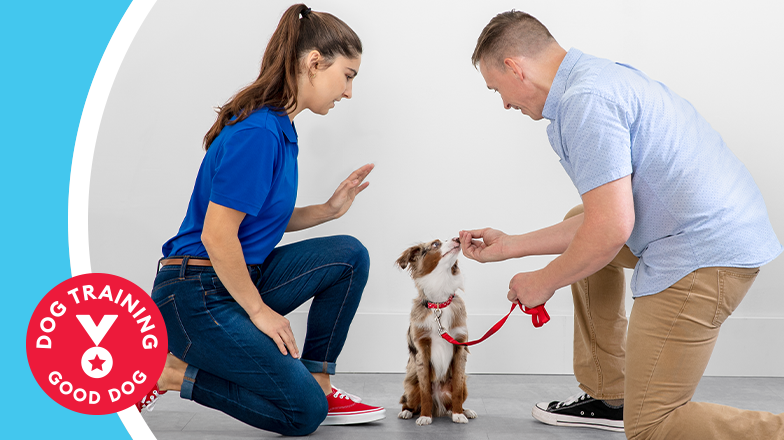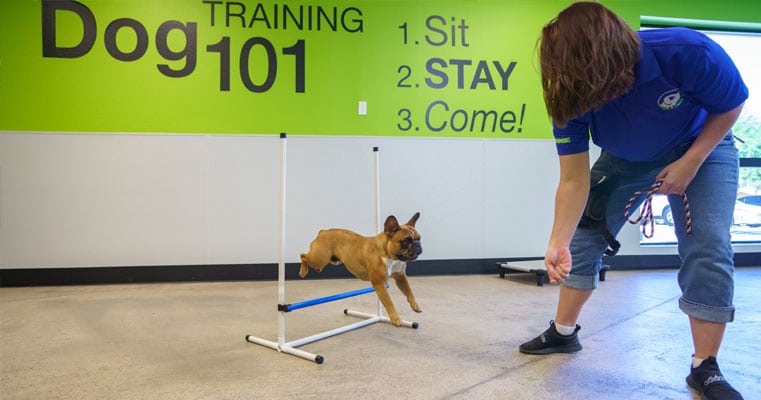Top Pet Dog Training Methods Every Proprietor Ought To Know

Positive Reinforcement Methods
Using favorable reinforcement strategies is necessary for reliable pet training, as it fosters a relying on bond in between the instructor and the pet. This technique concentrates on satisfying desirable actions rather than punishing unfavorable ones, producing an environment for discovering. Incentives can include treats, appreciation, or playtime, which inspire dogs to duplicate the actions that make them these incentives.

Furthermore, this technique boosts the pet's enthusiasm for training sessions. They are a lot more engaged and receptive when pet dogs associate training with favorable experiences. Dog training. Past instant behavior modification, favorable support motivates a joint connection between the canine and trainer, decreasing anxiousness and fear
To maximize performance, it is critical to supply benefits immediately, making sure the pet dog connects the behavior with the reinforcement. Basically, positive support methods not only generate better-trained pets yet additionally promote a harmonious collaboration between dog and owner.
Remote Control Training Technique
The clicker training method is a very reliable strategy that constructs upon the concepts of positive reinforcement by adding an unique audio to mark preferred actions. This method uses a little handheld tool that creates a clicking sound, allowing trainers to interact with their dogs in a instant and clear way. When a pet executes an actions that the proprietor wants to urge, the remote control is triggered, complied with by an incentive, generally in the type of treats or praise.
The key to successful remote control training lies in consistency and timing. It is essential to click at the precise moment the wanted actions happens, making sure that the canine links the sound with the activity and the subsequent reward. This approach not just boosts communication but also fosters a stronger bond in between the owner and the pet dog, as it urges involvement and interaction during training sessions.
Remote control training can be applied to a range of commands and actions, from fundamental obedience to a lot more complicated tricks. Its flexibility and efficiency make it a preferred strategy among expert fitness instructors and pet proprietors alike, leading the method for a responsive and trained canine companion.
Chain Training Fundamentals
Efficient chain training is necessary for making certain a risk-free and enjoyable walking experience for both canines and their owners. A level collar visit here may function for some canines, while others might benefit from a harness that minimizes pulling.
Present your dog to the leash progressively, enabling them to discover it in a comfy environment. Once they are accustomed, technique loose-leash strolling. This involves gratifying your canine for walking beside you rather than drawing in advance. Usage deals with and appreciation to strengthen desired actions, and make certain to continue to be assertive and tranquil.
If your pet begins to pull, quit walking right away. Wait up until they return to your side before resuming. This teaches them that pulling does not lead to proceed. In addition, method numerous walking atmospheres to help your dog adapt to interruptions.
Normal technique will solidify your dog's understanding of chain rules. Bear in mind that leash training is an ongoing process; persistence and uniformity will produce the most effective outcomes, fostering a positive experience for both you and your canine buddy.
Socialization Approaches
Socialization is a critical element of pet training that need to ideally start throughout puppyhood however can be useful at any age. Reliable socialization aids pets create self-confidence and lowers the likelihood of behavioral concerns. To implement effective socialization methods, expose your dog to a variety of settings, people, and various other animals.
Start with regulated setups, such as puppy classes or arranged playgroups, where young pets can communicate securely. Gradually present your pet dog to new experiences, including different noises, surfaces, and activities. Make certain these encounters are positive and gratifying to establish a complacency.
For adult canines or those lacking exposure, begin with low-stress scenarios. Short, favorable interactions with calm dogs and friendly humans can produce favorable organizations. Utilize treats and appreciation to enhance desirable behaviors during these experiences.

Uniformity and Persistence
Identifying the relevance of uniformity and patience in pet dog training is crucial for accomplishing long lasting results. Irregular training can lead to complication, making it difficult for the canine to grasp habits or commands, eventually hindering development.
Canines, like humans, discover at their own rate. This fosters a trusting partnership in between the canine and owner, encouraging a more eager and enthusiastic student.
To cultivate uniformity and perseverance, establish a regular training routine, make use of the exact same commands, and make certain that all household members use the same training concepts - Dog training. By doing so, you produce a secure environment for learning, allowing your dog to develop and thrive into a well-behaved buddy
Final Thought
Finally, reliable canine training techniques, such as positive reinforcement, clicker training, and correct chain training, are essential for promoting a healthy and balanced owner-dog connection. In addition, executing socialization approaches and maintaining consistency and persistence throughout the training procedure contributes considerably to a pet's total health. By integrating these methods, dog proprietors can help with the development of well-adjusted, obedient family pets, eventually improving the high quality of life for both the owner and the pet.
Amongst the most famous techniques are positive reinforcement, clicker training, and leash training, each offering one-of-a-kind advantages that contribute to a well-behaved dog. As we discover these fundamental techniques, it ends up being noticeable that understanding their nuances can dramatically influence the training experience and the pet's total habits.Utilizing favorable support strategies is crucial for effective dog training, as it fosters a relying on bond in between the instructor and the pet dog.In final thought, efficient pet dog training methods, such as positive reinforcement, clicker training, and appropriate chain training, find more info are essential for cultivating a healthy and balanced owner-dog connection. By integrating these methods, dog proprietors can promote the growth of well-adjusted, loyal pets, inevitably improving the high quality of life for both the proprietor and the canine.